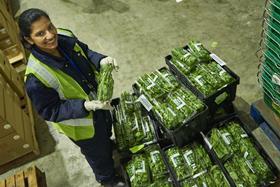
There is no more fundamental need than the need for food, and this will never go away. Thanks to the sea-change the novel coronavirus (Covid-19) has caused in the global landscape, that much has become obvious, even to those with their heads buried in the sand.
So while Covid-19’s impact on most sectors of the economy has been adverse, it has been a boon for the supermarket and grocery businesses, especially e-grocery services.
Take for instance the grocery market in Singapore, where 70 per cent of consumers are shopping online to stock their pantries and 69 per cent of first-time online shoppers plan to continue to do so in the coming months, according to CNBC. In China, 89 per cent of people are more willing to buy daily necessities and fresh products online once the pandemic is over, according to analysis from Nielsen. In Australia, e-grocery sales have increased a whopping 45 per cent with dollar sales for fresh produce sold online rising by 37.2 per cent, according to Nielsen.
An opportunity within the chaos
No wonder e-grocery companies across Asia-Pacific have noticed drastically increased demand. Compared to pre-Covid times, orders have risen two or three-fold. A fast-growing South-East Asian e-grocery start-up that we (Intello Labs) work with saw its orders soar three-fold in a matter of weeks, and they’re expected to stay at similar levels post-Covid too.
Struggle to meet orders
Naturally, all of them scrambled to ramp up service. Labour and logistics issues stretched operational capacity. Instead of the usual two shifts, the companies added a third shift and began night deliveries, managing to deliver at one-and-a-half times or in some cases double their previous capacity.
RedMart, an online grocery retailer in Singapore, exceeded its weekly average on orders by 300 per cent. Customers had to wait seven or more days to find a delivery slot. As a result, the online grocer grappled with strengthening its delivery fleet and fulfilling orders, according to reports from CNBC.
Quality takes a back seat
In the initial weeks of lockdowns and restrictions, when such panic buying was prevalent, order fulfilment was the need of the hour. So fresh produce quality took a back seat.
The consumer was content too, because when you’re only worried about stockpiling for the next few square meals, what matters is receiving necessities, not how great they are.
The current scenario
Now, over a month has passed in most countries and grocery volumes per household have somewhat normalised. But the health halo around fresh fruit and vegetables and the perception that daily intake will boost immunity levels and help ward off Covid-19 has kept demand up.
Combine it with a high consumption frequency, and the very understandable fear of contagion, and consumers are still sticking with getting their groceries delivered to the home via online grocers.
The boom is levelling off
However, with the madness of stockpiling over, consumers are back to focusing on the quality of the fresh produce they receive.Unfortunately, that has been compromised, judging by customer feedback received within the e-grocery and supermarket sectors.
The grading or sorting teams of online grocery firms and their suppliers and distributors are at pre-Covid sizes at best. In most cases, the labour availability has halved due to lockdown restrictions, limitation of movement, and fear of infection.
With the labour force diminished, and demand going up two- or three-fold, fulfilled orders are not meeting quality standards. As a consequence, customer complaints and/or rejections have increased significantly for fresh produce.For example, a fast-growing, well-funded Chinese start-up that we work is seeing consumer complaint rates going as high as 3-4 per cent for premium fruits, including durians and mangosteens.
Taking steps to improve quality
A satisfied customer is the customary aim of quality control. What has made it even more imperative right now is the additional sources retailers are using to keep up with consumer demand, such as farmers or vendors they’ve never worked with before.
And that’s the reason we’ve observed several e-commerce companies from diverse regions contact us to audit their quality processes. They are looking at quality innovation more favourably than ever before because most customer complaints pertaining to quality issues, whether they originate upstream closer to the farm or downstream at the last-mile, are totally avoidable using the right technology. So do we think Covid-19 will become an unexpected catalyst for tech adoption in e-grocery? Quite possibly, yes.



